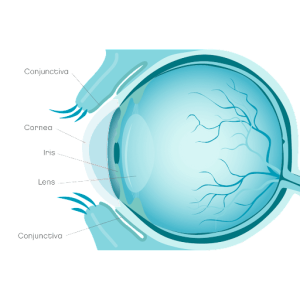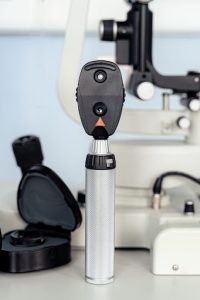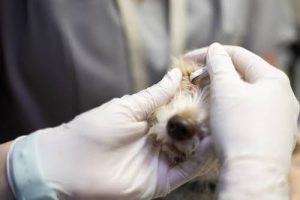Dry eye is an uncommon eye condition in cats. It causes symptoms of eye irritation, which overlap with many more common eye conditions in cats. It’s most likely to happen as a result of a viral eye infection or immune condition.
Vets call dry-eye to Keratoconjunctivitis sicca or simply KCS. It means your cat can’t produce enough tears to keep the surface of their eye healthy. Cats with dry eye are prone to sticky discharge, conjunctivitis and painful eye ulcers. There’s rarely a cure for dry eye, but the condition can be effectively controlled with drops or surgery. Early identification offers the best chance of successfully managing dry eye and minimising long-term damage to the eye surface.
Overview
What is dry eye in cats?
Tears are produced by glands in the conjunctiva and third eyelid, located in the corner of the eye. They’re swept across the eye when your cat blinks.
The role of tears:
- Moisturising and cleansing the clear surface of the eye, called the cornea
- Protecting the eyes from dirt, dust or other debris
- Maintaining eye comfort

Dry eye happens when the tear-producing glands become unable to produce enough tears to keep the cornea moist. The cornea becomes dry, irritated and painful. And failure to wash away things like dust results in even more damage.
Causes of dry eye:
- Viral infections, such as feline herpes virus
- Immune diseases: the body’s defence cells attack and destroy the tear-producing glands by mistake
- Bacterial infections, such as chlamydia
- Certain medications: sulphonamide antibiotics may cause temporary or permanent dry eye
- Damage to the facial nerve due to severe chronic ear disease
- Removal of the third eyelid gland as a treatment for cherry eye
Symptoms
What are the symptoms of dry eye in cats?
Dry eye may affect one or both eyes, depending on the cause.
Symptoms include:
- Red painful looking eye(s)
- A thick sticky grey/green discharge on the surface of the eye and in the corner. Especially in the morning.
- Squinting or reluctance to open the affected eye(s)
- A dull, rough appearance to the cornea.
- Spidery red blood vessels on the surface of the eye.
- Scarring or dark pigment on the surface of the eye, possibly reducing vision.
Symptoms develop gradually as inflammation and eye damage worsen. The dry, inflamed cornea is also likely to develop conjunctivitis and painful corneal ulcers.
Risk
Which cats are most at risk of dry eye?
Any cat can develop dry eye, but some factors increase the risk:
- Belonging to certain breeds: Abyssinian, Himalayan, Burmese, Persian, and domestic shorthair
- Having another illness: cat flu, chlamydia
- Being given certain medicines
Diagnosis
How do vets diagnose dry eye in cats?
Vets will diagnose dry eye based on the history of sticky discharge and inflamed eyes and on the following tests:
- Eye exam: using an instrument called an ophthalmoscope to examine the surface and deeper parts of the eye

- Schirmer tear test: A simple painless test that the vet uses to find out how much moisture (tears) your cat produces in 1 minute. The test involves touching a slim piece of specialised filter paper to the eye surface. Cats with dry eye produce little, if any, moisture, so the paper stays dry.

Vet treatment
Vet treatment for dry eye in cats
Special eye drops:
- Lubricants or tear replacements: Provide extra moisture to keep the eye comfortable and protected. Especially important overnight, when your cat is asleep and blinks less.
- Immunosuppressive drops: Cyclosporine drops and Tacrolimus drops combat damage by the body’s defence cells.
- A nerve stimulant called Pilocarpine: an effective treatment for dry eye caused by nerve damage.
Surgery:
- Parotid duct transposition: Replacing tears with saliva. An operation to move one of the ducts (tubes) carrying saliva from a salivary gland to the eye instead of the mouth. The eye is kept moist and comfortable but becomes very wet. Drawbacks of the procedure include skin irritation and dermatitis. Calcium in saliva may also irritate the surface of the eye after a while.
Home treatment
How to care for a cat with dry eye at home
There are no home remedies for dry eye in cats. But ongoing home care is essential to keep your cat’s eyes as clean and comfortable as possible.
- Use all medicines at the time and dose prescribed
- Keep their eyes clean. Bathe gently with cooled, boiled drinking water and a clean cotton pad. Do this twice daily to remove any sticky discharge that accumulates.
- Avoid walks in dry dusty places or in windy weather
- Monitor carefully for signs of discomfort, such as holding the eye closed, increased rubbing, or redness
Prevention
Can dry eye in cats be prevented?
In most cases, getting KCS is an unfortunate chance and can’t be prevented.
For the more preventable causes:
- Prompt recognition and treatment of illnesses that predispose to dry eye.
- Vaccinating your cat against cat flu.
- Careful monitoring of tear production in cats receiving medicine that may trigger dry eye.
When to worry
When to worry about dry eye in cats
Contact a vet as soon as possible if your cat:
- Seems suddenly blind.
- Is unable to open their eye(s) and is in pain.
- Has a new white or pink patch on the surface of the eye (an ulcer).
Joii can help with:
- Assessing discharges or weepy eyes.
- Simple eye treatments.
- How to apply eye drops to cats.
- Recognising pain in cats.








